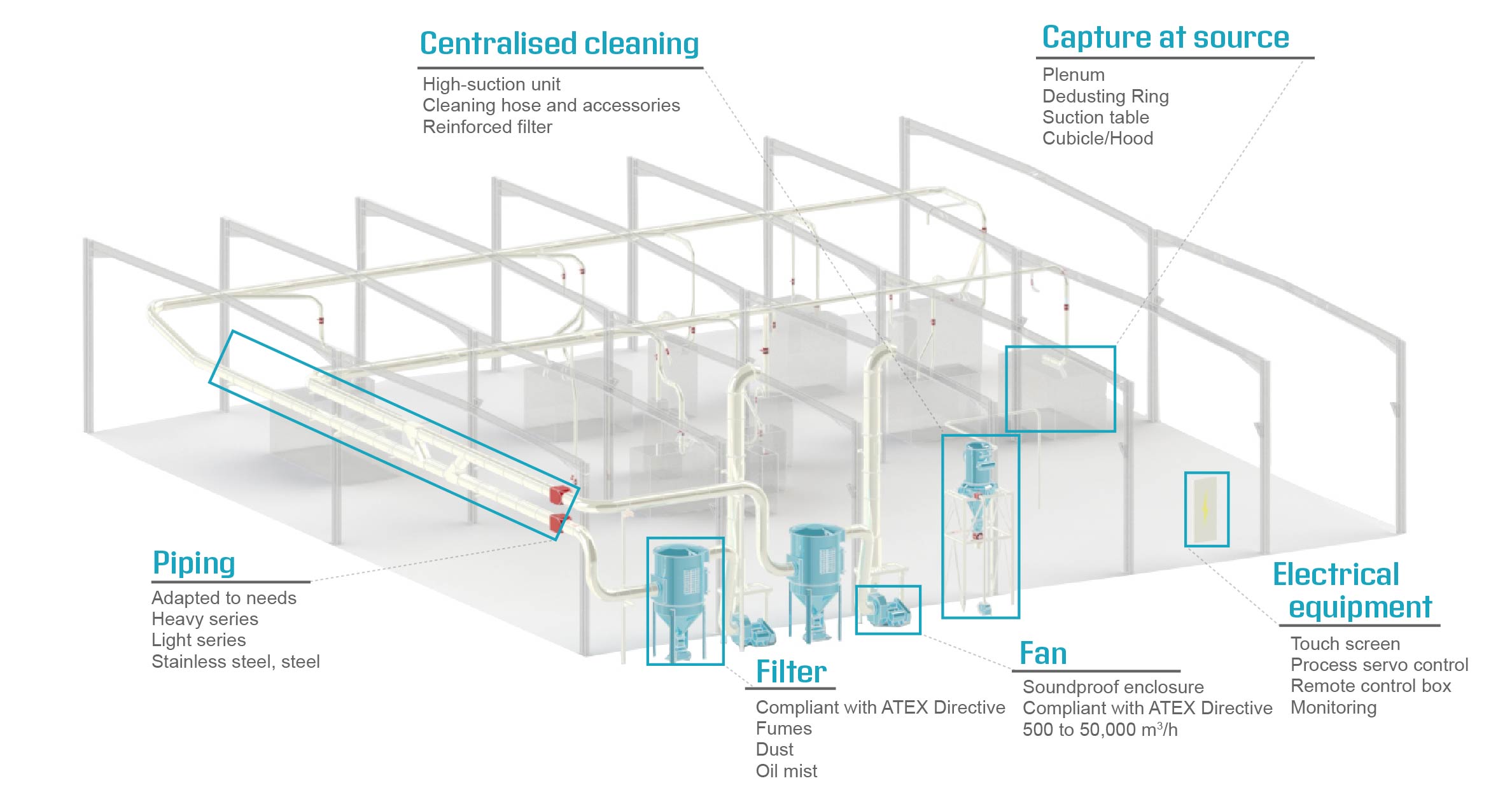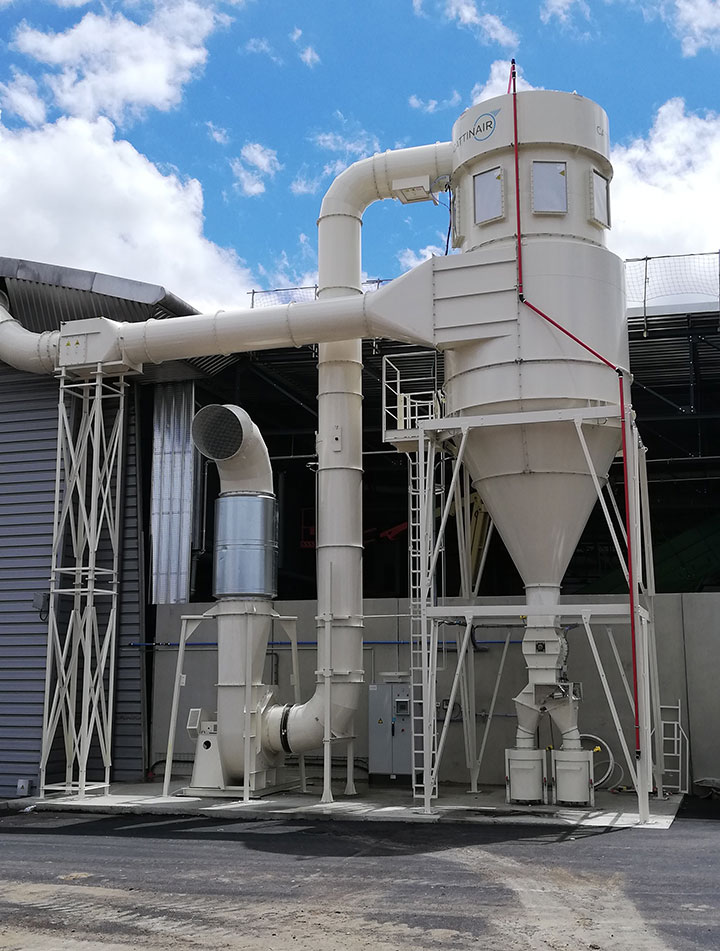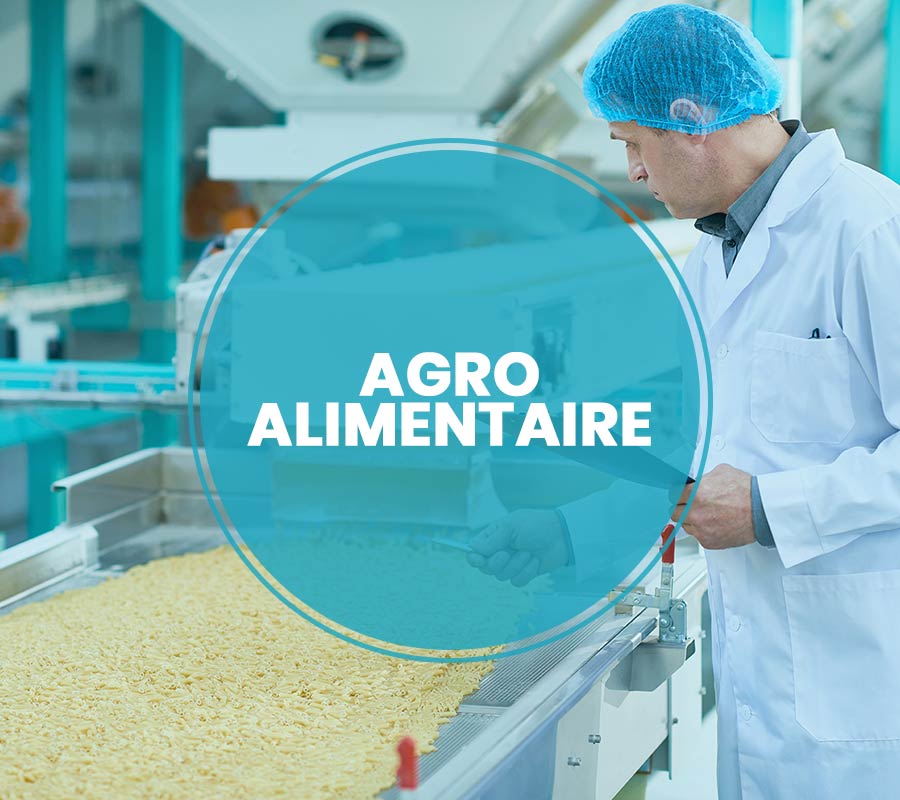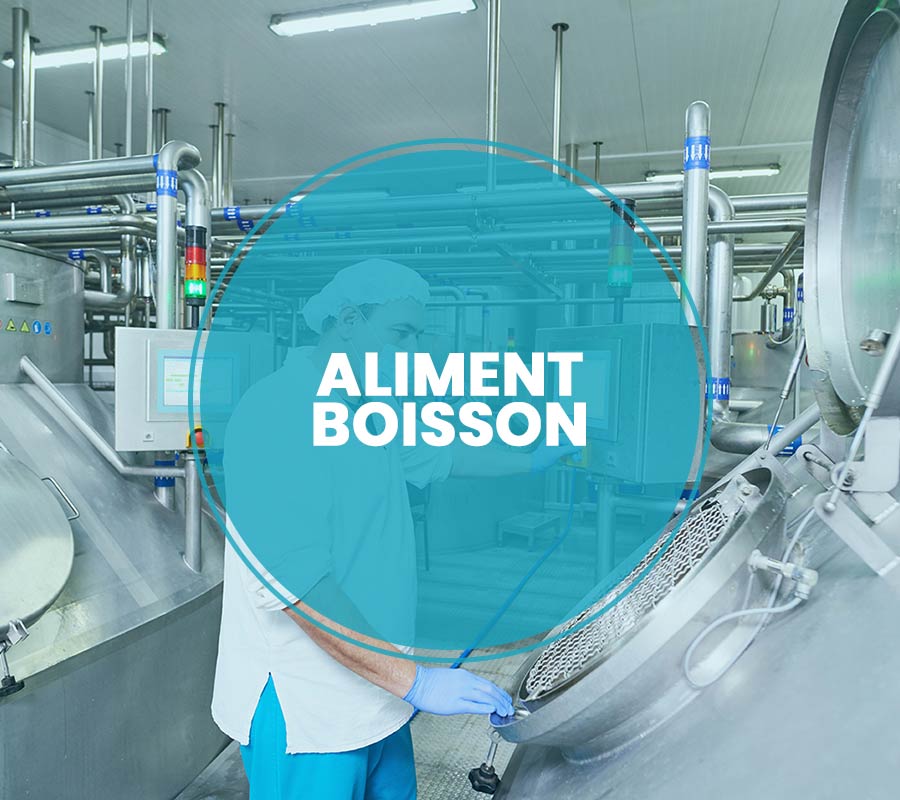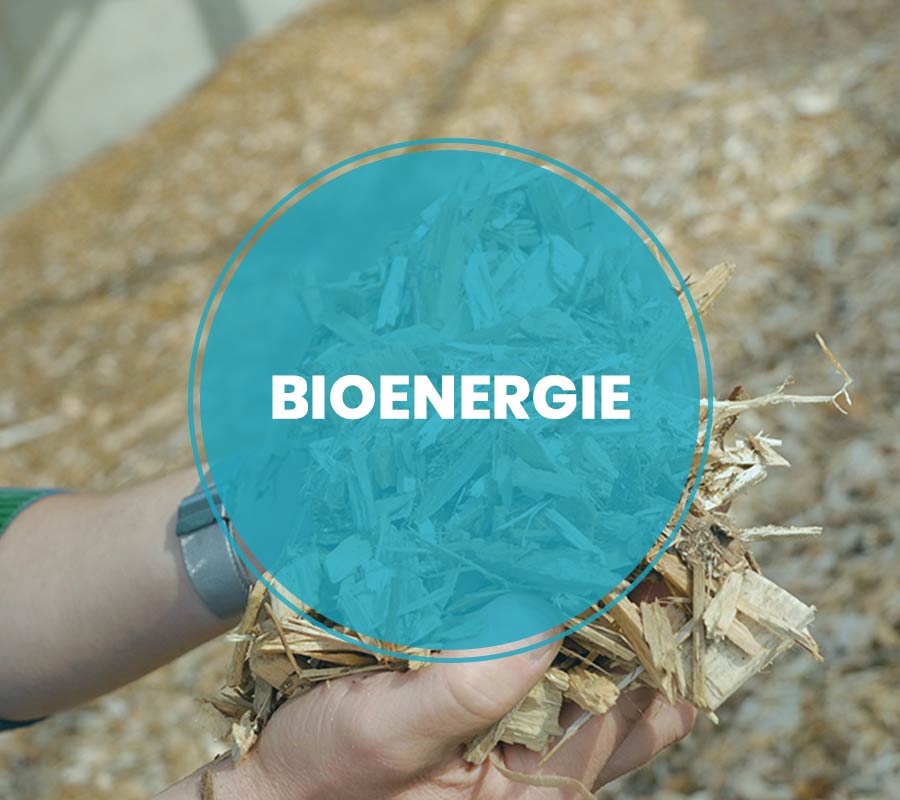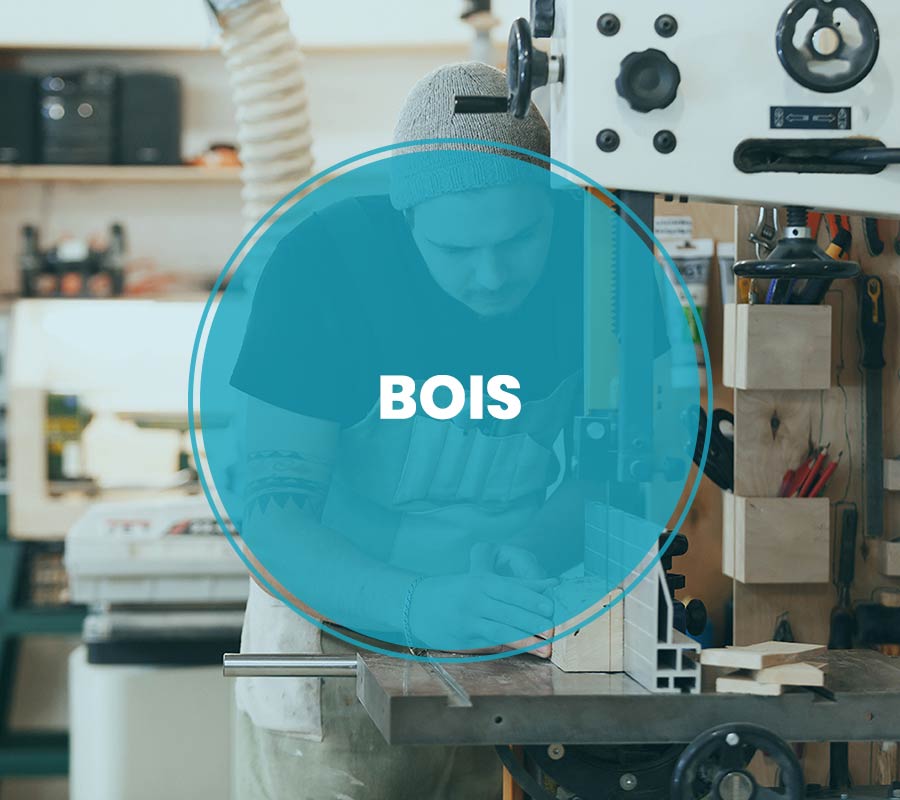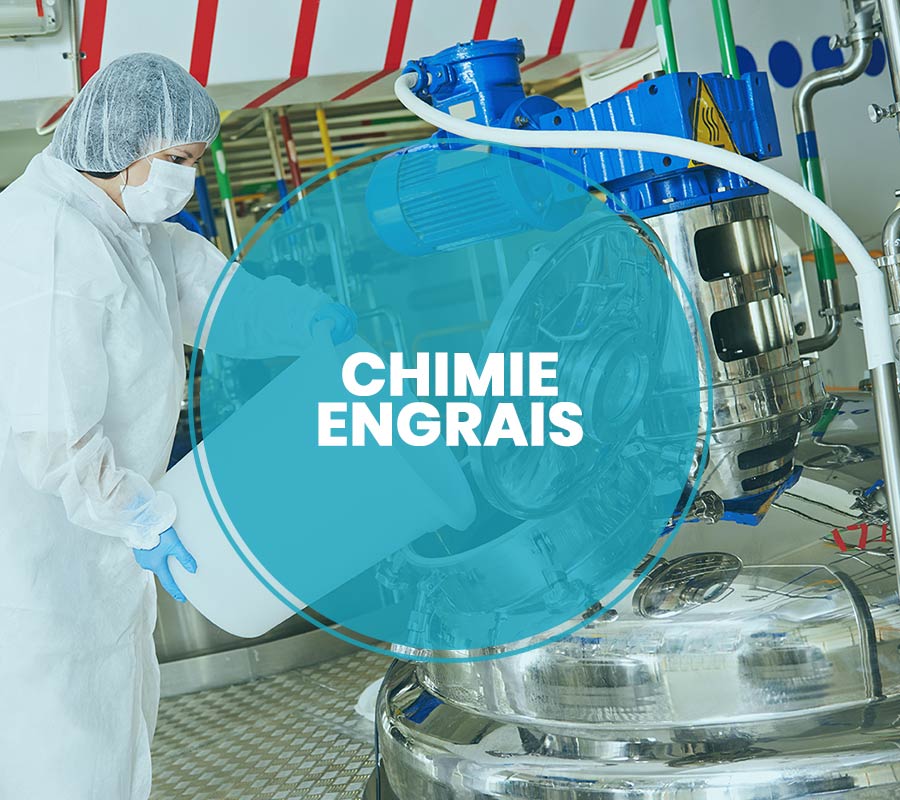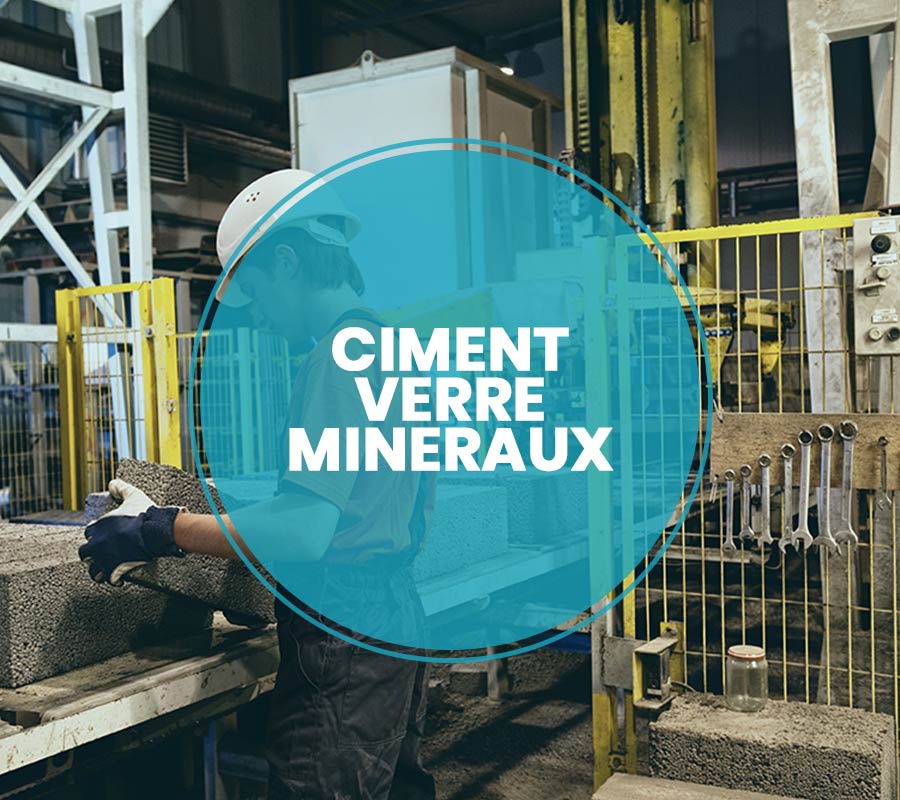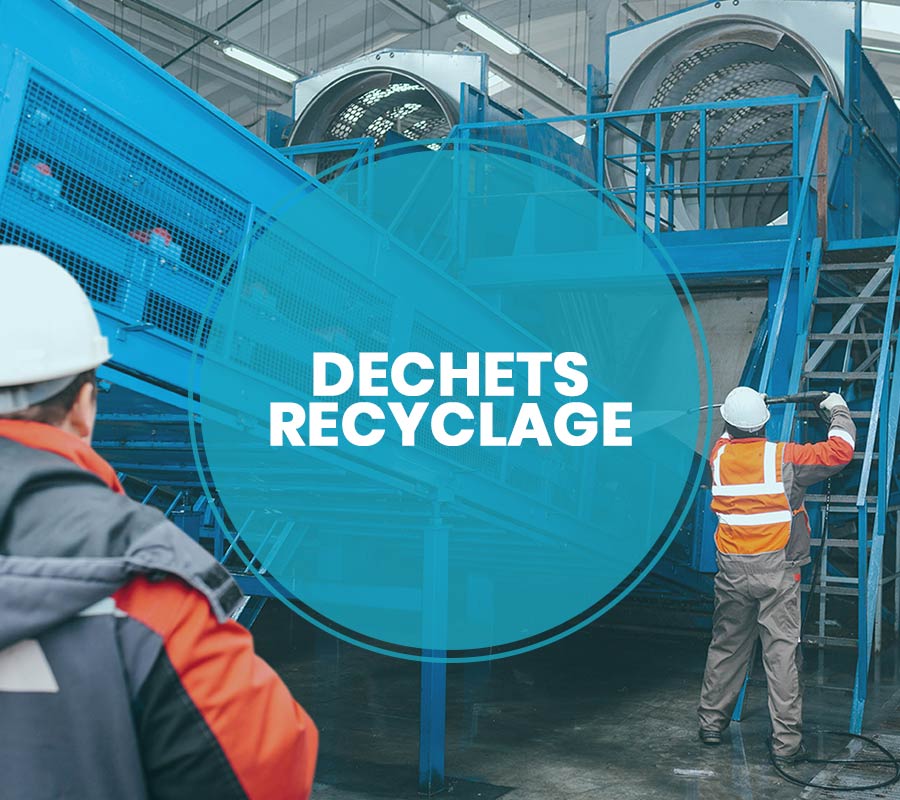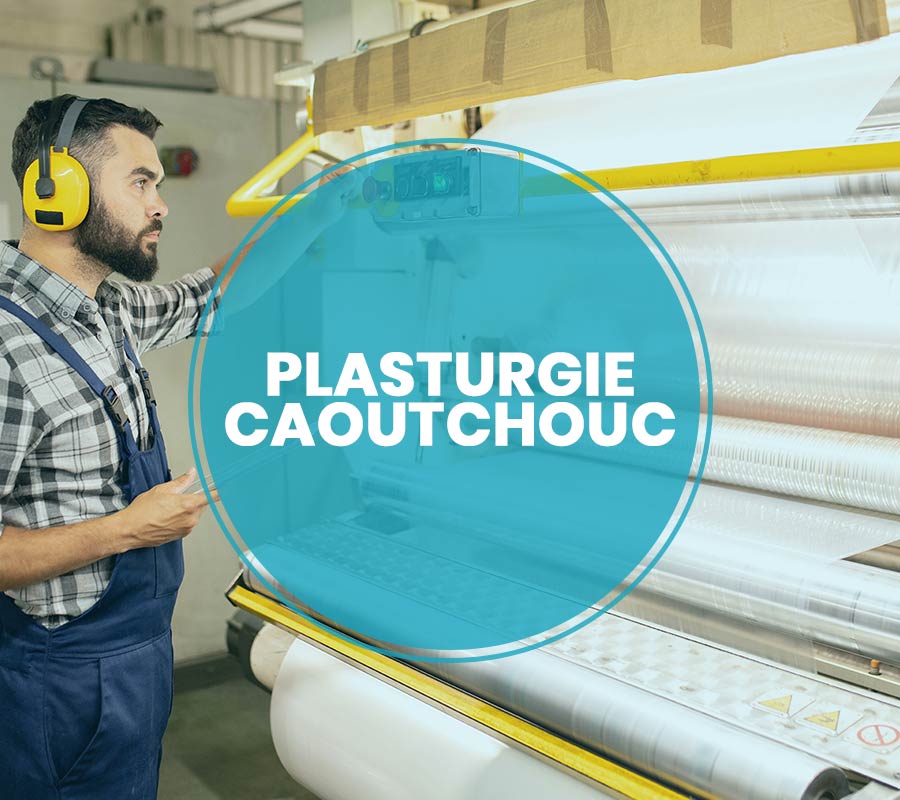Dusting and cleaning of production areas in sorting and recycling centers
Waste processing is a major concern in today's society. Industrial waste and the recycling of this waste involves numerous handling operations which can generate dust.
Purifying the air in sorting or recycling centres has become a priority to ensure the protection of operators and cleanliness of the work environment.

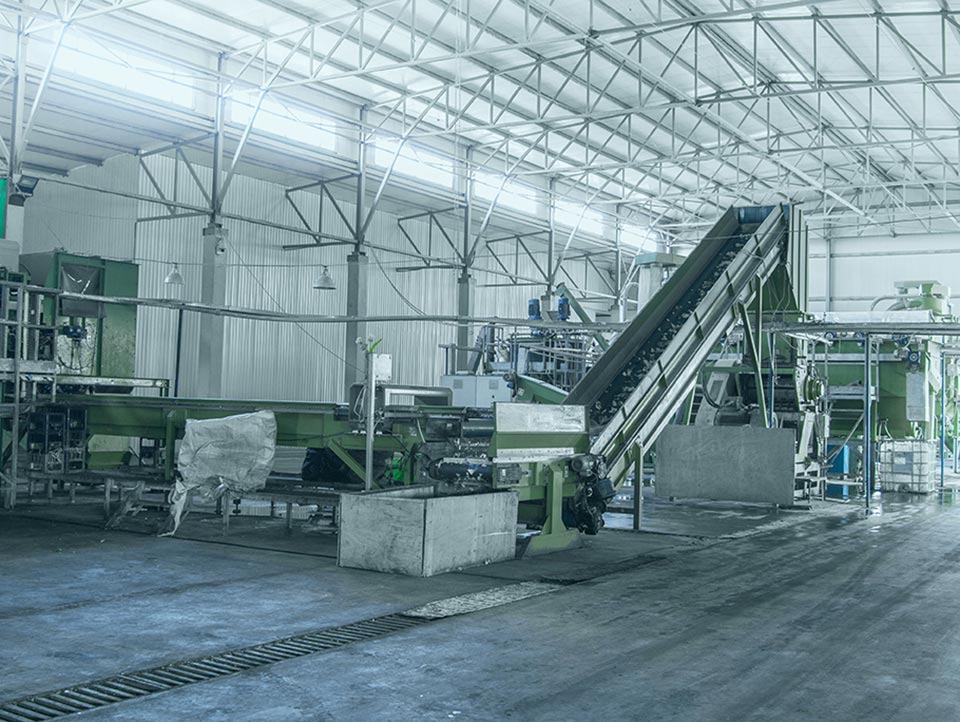
Our expertise
Handling equipment (unloading, sorting, conveying, etc.), and in particular processing equipment (crusher, screen, trommel, pelletiser, etc.), generate pathogenic dust and fumes that can cause respiratory problems for operators, or even serious complications.
Suction of contaminants on these various processes, but also the cleaning of production areas (cleaning floors and machinery) improves the working conditions of operators.
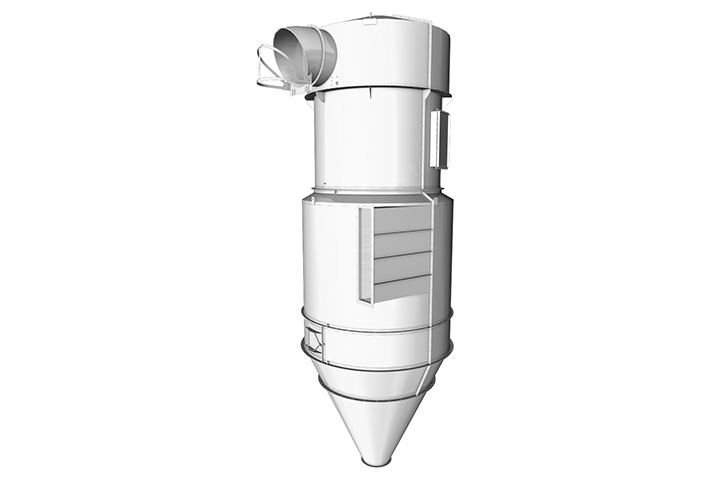
A wide range of dust extraction equipment
To address all of the problems faced by companies in the metal, plastic and wood recycling industries... CATTINAIR designs and offers a wide range of industrial dust extraction systems (in compliance with ATEX regulations).
These dust extractors are installed to ensure continuous suction on production equipment, but they are also used to process filtration air from centralised cleaning installations (extraction unit).
Expert in “turnkey” engineering
The installation of industrial dust extraction systems is the best way to address air quality issues within the sorting and recycling sector. After a personalised and in-depth process study, our project managers develop specific, ergonomic dust extraction systems that capture contaminants at source: metal dust, mineral, vegetable or fibrous dust, etc.
For all these types of dust that have accumulated in and around the production tool, our centralised vacuum extraction solutions capture the contaminants by means of cleaning accessories (suction attachments, brushes, pipes, etc.) connected to vacuum extraction hoses and outlets. The extraction points are installed directly in the workshop to enable the thorough cleaning of production areas and keep the industrial environment clean.
General ventilation systems can be used in addition to an extraction at source system and can also remove heat at the heat production source.
A comprehensive offer
Commissioning of installations by our project managers who helped design the installation.
Monitoring of proper functioning and measurement of air speeds and pressure losses of each machine and at different points of the suction collectors, motor intensities, as well as sound levels which are included in the technical file and certify compliance with the regulations.
Our Service Department offers original spare parts, upgrading and preventive maintenance contracts.
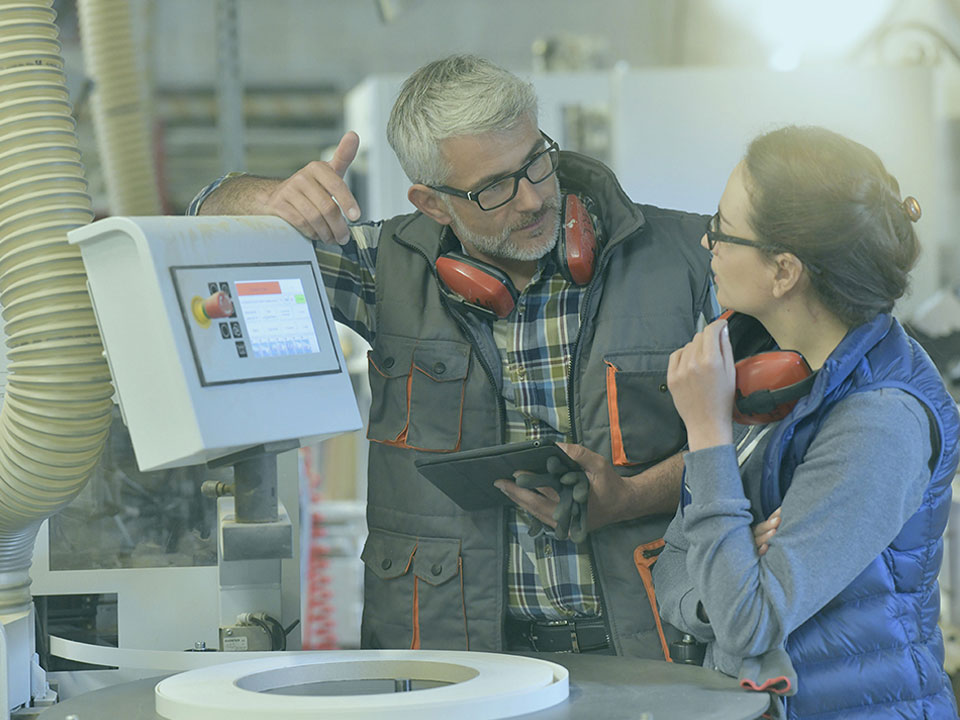
Nos références
Waste treatment facility
Application:
ATEX dust remobal for the new recycling center in the Limoges Métropole agglomeration
Equipment installed:
Cyclofilter 4Y6, fan BLC 32 / 90 kW
Airflow rate:
36,400 m3/h
Benefits for the customers:
Centralization of catchmentss in the sorting and househole waste process
Are you an installer/fitter?
Regulations
CHROMIUM VI or hexavalent chromium and its compounds
In the workplace, inhalation is the main route of exposure to chromium VI. It is considered carcinogenic by the CIRC (WHO cancer research agency) (Group 1). Related cancers are lung cancer, cancer of the nasal cavities and sinuses.
In the work environment, the occupational exposure limit values for hexavalent chromium are set at 1µg/m3 for 8-hour exposure limit (Decree no. 2012-746) and 5µg/m3 short term exposure limit (STEL) (1st July 2014).
Dust of mineral origin (silica, asbestos, iron, zinc, cobalt, tin, etc.) and vegetable origin (bagasse, cotton, cereals, flour, etc.) provide numerous and varied routes of exposure in the workplace. This dust may come directly from the raw materials used (in powder form in particular) and are released during their production, transportation storage or implementation (extraction, crushing of mineral ores, flour production, manufacture and use of plastic materials, etc.).
They are also produced during the processing of finished or semi-finished products (metal machining, sawing, sanding, grinding of wood or synthetic materials, waster grinding…) or during demolition and cleaning operations.
The occupational exposure limits apply to all forms of dust (marble, dust, etc.). Article R. 4222-10 of the French Labour Code.
8-hour time-weighted average
- total dust: = 10 mg/m3 of air
- respirable dust = 5 mg/m3 of air
Dust can cause explosions. Solutions are available to reduce this risk which must comply with the ATEX Directive.
More information available in our Regulations section.




